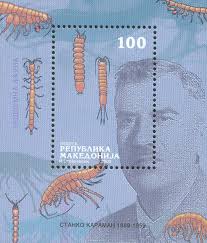Laboratory toxicity test designs are far from reality and therefore extrapolations to field situations may be more difficult. In laboratory experiments with the amphipod Gammarus roeseli exposed to the insecticide imidacloprid it was investigated if test conditions closer to reality influences its sensitivity and if it is possible to extrapolate results from these laboratory tests to results from a stream mesocosm study. Experiments were run by varying medium, temperature, size, and seasonal origin of gammarids. Age and seasonal aspects had strongest effects with juveniles and animals taken from a spring population being most sensitive with an EC50 (96 h) of 14.2 mg/L imidacloprid. The test designs closest to the conditions in the stream mesocosms reflected best the results in mesocosms study on basis of LOEC values. However, the ECx extrapolation failed to predict the effects of short term imidacloprid pulses in the field.
Source:
R. Böttger et al. Ecotoxicology and Environmental Safety 81 (2012) 49–54

- Log in to post comments
